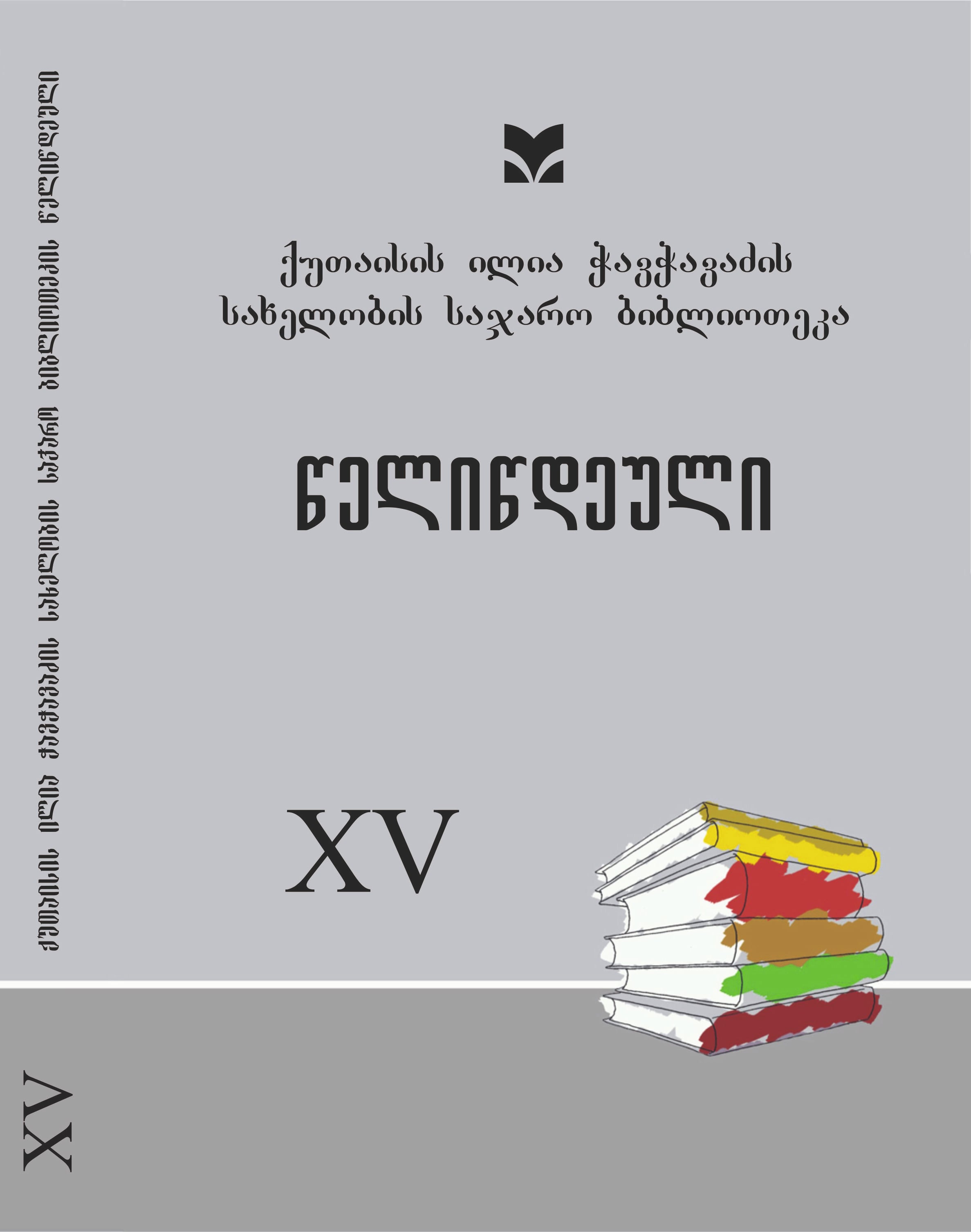Superstition - plot of Davit Kldiashvili’s stories (according to Elguja Tavberidze’s „The Shirt of The Doubt“)
DOI:
https://doi.org/10.61491/yk.15.2023.8074Keywords:
Imereti in artistic creativity, prejudice in Davit Kldiashvili’s stories, Elguja Tavberidze’s „Shirt of Doubt“Abstract
Davit Kldiashvili›s creative principle is rooted in the literary-aesthetic foundations of critical realism and the pursuit of undisguised truth. His work is distinguished by thematic and genre variety. A „smile with tears“ has become a metaphor for his artistic creations, which evoke both heartwarming tears and soulful introspection. Through superstition, the human world is depicted as filled with doubt, despair, and unconscious cruelty. In this context, we discussed stories such as „Anger“, „Victim“, and „Michela“. These narratives, true to the author›s style, exhibit psychological depth, subtle analysis of emotions, and a sense of believability.
Among the most challenging events influenced by superstition is „tailing“, whose spiritual and psychological core revolves around fear and the breakdown of internal resolve. Prejudice, according to some opinions, forms the basis of several of Kldiashvili›s stories. Elguja Tavberidze’s „The Shirt of Doubt“ approaches characters with an artistic-scientific lens, examining the motivations behind their actions and describing rituals associated with „tailing“ (chiakakonoba, chechetoba). Tavberidze discusses the first attempt in Georgian literature to transform the superstition of „tailing“ into an artistic narrative - Al. Orbeliani’s „Arak Tartaroz, or Night of the Tailed Ones“.
The author cites the press of his time as a significant source of inspiration for „The Shirt of Doubt“, which he knows intimately. Superstition, portrayed as a shackle on consciousness, impedes genuine and lawful living.
We identified a unique character type - Marine (the „victim“ in the story). Unlike the writer’s usual characters, who typically exhibit obedience to fate, Marine is portrayed as a fighter. Our research focused on the psychological process behind the darkness and cruelty of superstition, which holds a narcotic allure that ultimately overcomes Marine when she finds herself utterly alone. „The Shirt of Doubt“ significantly deepens this line of inquiry. It underscores a cause-and-effect artistic-documentary chain.
In conclusion, Elguja Tavberidze’s „The Shirt of Doubt“ emerges as an important and essential book from this perspective.




